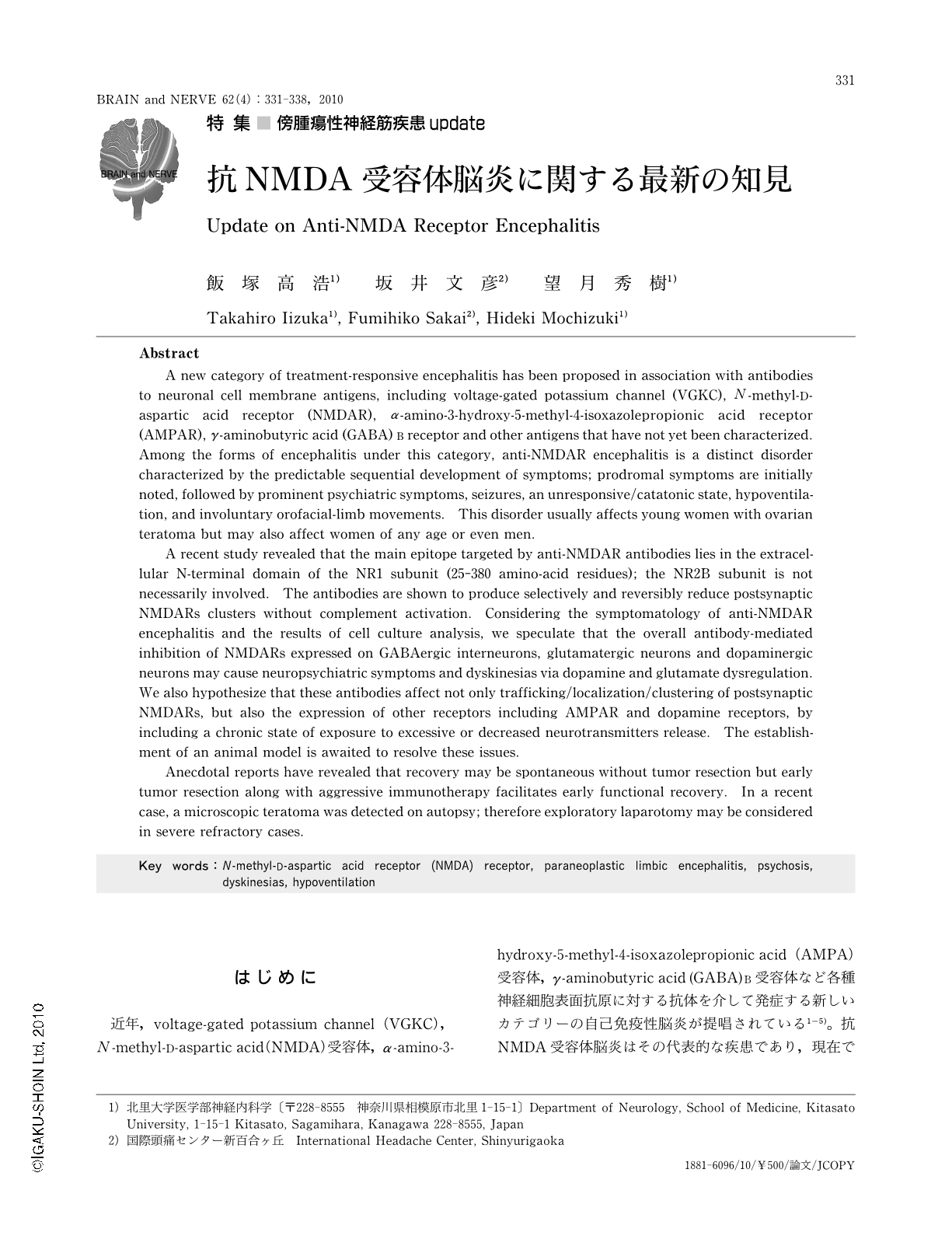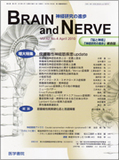Japanese
English
- 有料閲覧
- Abstract 文献概要
- 1ページ目 Look Inside
- 参考文献 Reference
はじめに
近年,voltage-gated potassium channel(VGKC),N-methyl-D-aspartic acid(NMDA)受容体,α-amino-3-hydroxy-5-methyl-4-isoxazolepropionic acid(AMPA)受容体,γ-aminobutyric acid (GABA) B受容体など各種神経細胞表面抗原に対する抗体を介して発症する新しいカテゴリーの自己免疫性脳炎が提唱されている1-5)。抗NMDA受容体脳炎はその代表的な疾患であり,現在では本邦でも稀な疾患ではないと考えられている6)。本疾患の臨床症状,検査所見,病態,治療については本誌の60巻9号7)に既に述べているが,本稿ではこの1年間に報告された新しい知見を含め最新情報を述べる。
Abstract
A new category of treatment-responsive encephalitis has been proposed in association with antibodies to neuronal cell membrane antigens, including voltage-gated potassium channel (VGKC), N-methyl-D-aspartic acid receptor (NMDAR), α-amino-3-hydroxy-5-methyl-4-isoxazolepropionic acid receptor (AMPAR), γ-aminobutyric acid (GABA)B receptor and other antigens that have not yet been characterized. Among the forms of encephalitis under this category, anti-NMDAR encephalitis is a distinct disorder characterized by the predictable sequential development of symptoms; prodromal symptoms are initially noted, followed by prominent psychiatric symptoms, seizures, an unresponsive/catatonic state, hypoventilation, and involuntary orofacial-limb movements. This disorder usually affects young women with ovarian teratoma but may also affect women of any age or even men.
A recent study revealed that the main epitope targeted by anti-NMDAR antibodies lies in the extracellular N-terminal domain of the NR1 subunit (25-380 amino-acid residues); the NR2B subunit is not necessarily involved. The antibodies are shown to produce selectively and reversibly reduce postsynaptic NMDARs clusters without complement activation. Considering the symptomatology of anti-NMDAR encephalitis and the results of cell culture analysis, we speculate that the overall antibody-mediated inhibition of NMDARs expressed on GABAergic interneurons, glutamatergic neurons and dopaminergic neurons may cause neuropsychiatric symptoms and dyskinesias via dopamine and glutamate dysregulation. We also hypothesize that these antibodies affect not only trafficking/localization/clustering of postsynaptic NMDARs, but also the expression of other receptors including AMPAR and dopamine receptors, by including a chronic state of exposure to excessive or decreased neurotransmitters release. The establishment of an animal model is awaited to resolve these issues.
Anecdotal reports have revealed that recovery may be spontaneous without tumor resection but early tumor resection along with aggressive immunotherapy facilitates early functional recovery. In a recent case,a microscopic teratoma was detected on autopsy; therefore exploratory laparotomy may be considered in severe refractory cases.

Copyright © 2010, Igaku-Shoin Ltd. All rights reserved.


